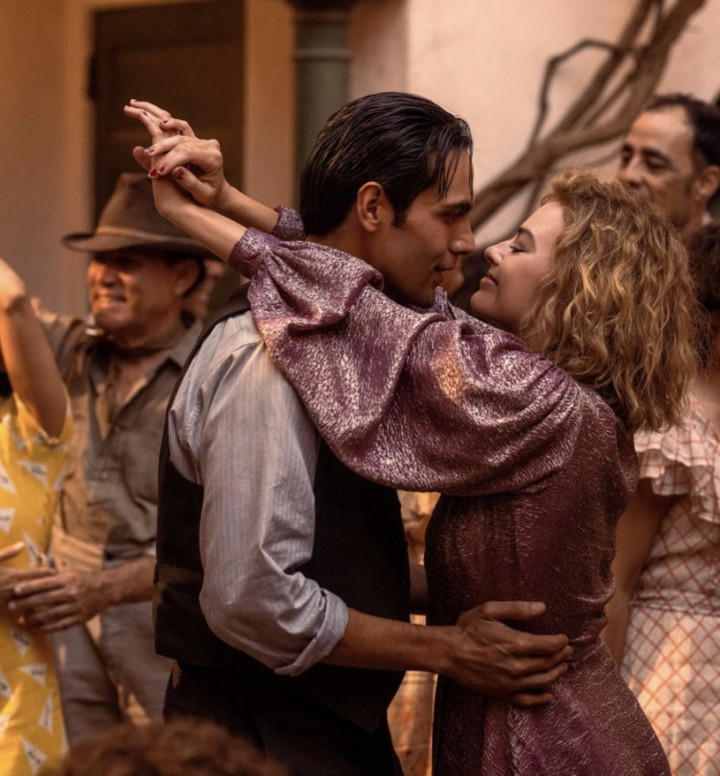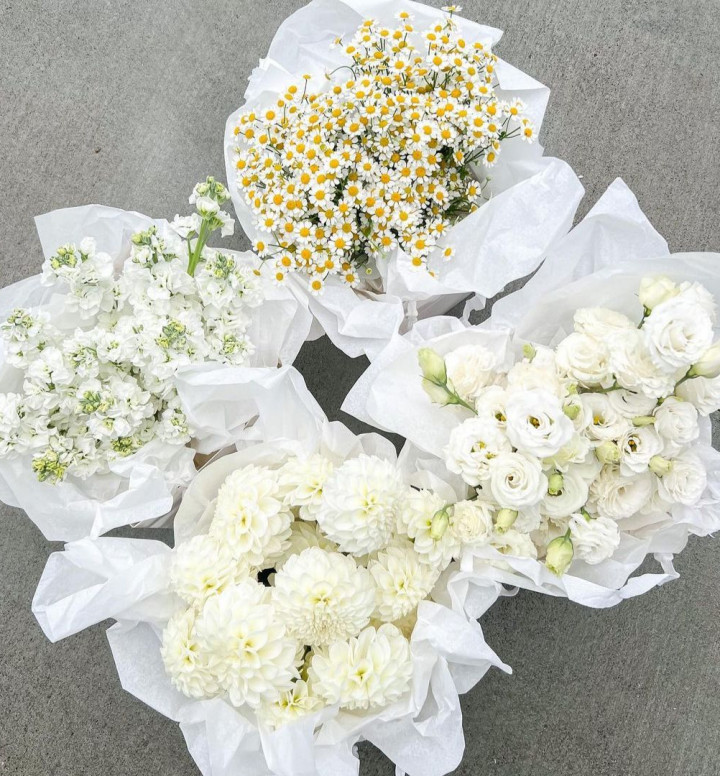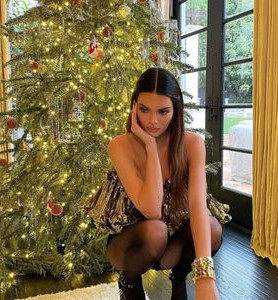Meet Titouan Bernicot and The Coral Gardeners
Growing up around the cultivation of Tahitian pearls, deep diving and spearfishing on Mo’orea Island, Titouan Bernicot was no stranger to the ocean growing up. Through a pure fascination with the underwater world and learning to swim before he could walk, his calling for coral conservation was only natural. In 2017, Titouan banded together with his childhood friends and created the Coral Gardeners where their crusade for coral conservation and restoration has now caught the attention of both social media and Rolex. Being a part of Rolex’s Perpetual Planet Initiative is one of many incredible milestones that Titouan and the Coral Gardeners have achieved; here they discuss the process around coral conservation, and how time plays a big part in their efforts.
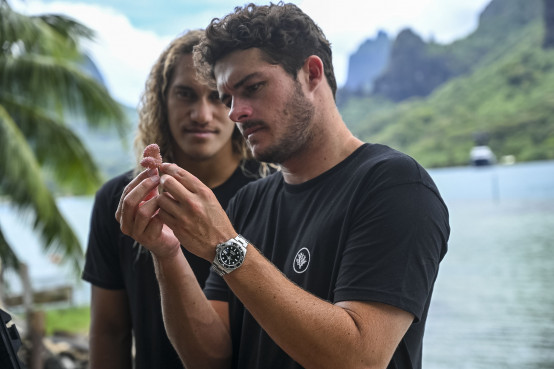
The climate crisis is a topic constantly being discussed - especially the ocean. What made you go further than just the conversation?
You are right, the climate crisis is something that we are talking more about, and we need to talk even more about it, but the truth is that when I started the project, I wasn’t aware of the impact of climate change on our ocean and even less on coral reefs. It was only when I was 16 years old that I realized the scale of this crisis and that it even had an impact here, in the middle of the South Pacific Ocean on the tiny island of Mo’orea. One day, I paddled out to my local reef break just outside my house with my friends, and looking down from my surfboard, I noticed the corals that were once a rainbow of colours, were bleached white. Confused at why this was happening, I began researching the cause and found that climate change was devastating coral reefs not only here on Mo'orea island, but all around the planet, and they could be the first ecosystem to collapse in our lifetime. From that moment, I knew I had to act and act fast to save the reef. After realizing that my world was dying in front of my own eyes, protecting coral reefs became my mission in life.
I read that you actually ‘glue’ coral back to the reefs - can you talk to us a bit more about this and the benefits?
Coral gardening is such an interesting process. It’s like gardening with plants on land but underwater. We collect fragments of heat-resilient corals in the lagoon to grow in nurseries for about 12-18 months, where our team of gardeners and scientists monitor their progress and health. Once they are mature enough, the corals are returned to the reef, where they can continue to grow and recreate new habitats for marine life. Corals are animals and as they grow they permanently attach themselves to the ocean floor, essentially taking roots like most plants do. To secure the corals onto the reef, we use marine cement or stainless steel clips called Coralclip® to help the coral fragments attach themselves to the surface. We give them an aid to go through the natural process and adhere to the structure below.
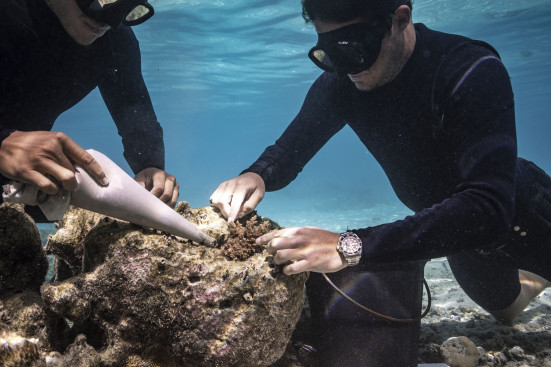
What are some of the proudest moments you’ve experienced thus far?
I am very proud of my team and what we have accomplished together. We have a great team spirit; we work hard, and we also have fun along the way. From my childhood best friends whom I get to work with and all the amazing talents who joined the project over the years, it just feels good to have the right people helping you to get closer to your vision. To be able to create and give opportunities to local communities and people from around the world with different backgrounds through the project is just so beautiful and fulfilling. Something I am also particularly proud of is our current reef restoration program. It hasn’t always been easy to find the right methods. When we started, we didn’t have any knowledge in the field, so we learned by doing with the help and guidance of a variety of coral scientists, mentors, and trial and error. Today, we have full-time biologists and scientists in the team and we have been able just in 2022 to double our number of coral outplants by planting as many corals in one year as in the past five, reaching 31K corals and the results are very encouraging. We also have our CG Labs which is helping us to optimise even further our restoration and monitoring methods. Also, joining the Rolex family alongside conservationists like Cristina Mittermeier and Sylvia Earle has been a dream come true. It’s an honour to be supported by the Rolex Perpetual Planet Initiative, following the path of inspiring scientists and explorers. It encourages me to get in the water and do more.
The Ocean is an entire planet of its own - what are some of the most incredible things that you’ve come across/discovered during your explorations?
You are right. Our planet is so beautiful and yet fragile. The ocean will forever be my favourite playground. I spent the first couple of years of my life on a tiny atoll in the South Pacific Ocean, where my parents owned a pearl farm. It was an amazing place to begin my time on this planet. Everywhere I looked, there were patterned fish, covered with spots and stripes, and sharks patrolling the reef nearby. Growing up, all my favourite moments were in the ocean, from diving with giant humpback whales to surfing the reef. But you know, you can’t connect more with the ocean than the day you learn how to garden it! You can observe, and explore, but the day you take your little fragments of coral; you see it growing and becoming a bigger coral; and then you see the marine life choosing it. There’s no better way to connect with the ocean and be in harmony with it. I recently had the chance to do some field missions to assess new sites in Southeast Asia and Fiji and it was amazing to discover some beautiful reefs with new species of corals that I had never seen before with all their different shapes and colours. But I also witnessed some damaged parts of the reefs there that could benefit from restoration, and this is why we exist.
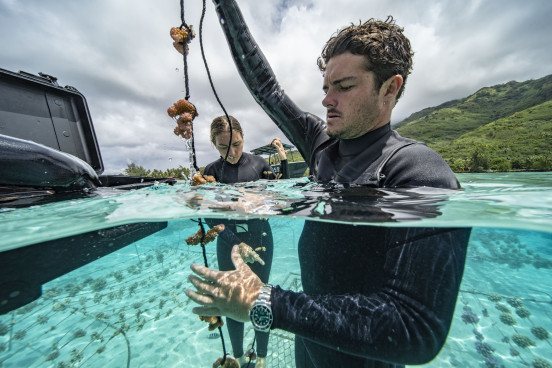
What about some more challenging times or scary moments?
Currently, our biggest challenge is strategizing how to scale and speed up conservation in time to save the reef amidst the climate crisis. Planting and monitoring corals is a fastidious task, but we know we must act fast and effectively to hit this deadline. A secondary challenge in conservation efforts often comes down to funding and ensuring it is sustainable in the long term to support the mission. Therefore having the support of partners like Rolex and its Perpetual Planet Initiative is crucial for the success of our mission and we are so grateful.
Working with a conglomerate such as Rolex is so cool - how has your experience been being a part of their Perpetual Planet Initiative?
I would have never imagined when I started Coral Gardeners in a corner of my bedroom with some island friends that five years later, I would be partnering with a legendary organization like Rolex and have them support our work. It’s just crazy and I feel honoured and empowered to have them by my side. It’s been such a humbling experience to work alongside Rolex so far, with their precious support and advice, and they also help us amplify our message and create the connections and collaborations needed to scale up conservation. They have introduced us to so many amazing people and opportunities already.

How does time play a part in your adventures?
The clock is, definitely, ticking. The time to act for coral reefs is NOW. We have lost as much as 50% of the planet’s coral reefs in the past 30 years; and without immediate and bold action, they could be the first ecosystem to collapse in our lifetime. As part of the UN Decade on Ecosystem Restoration, the next few years will be crucial for coral reefs. This is why we kicked off our Odyssey expansion strategy to drastically scale up and democratise coral reef restoration around the world and provide scientific evidence on its efficacy to boost coral reef resilience and regeneration. Our goal is to plant 1 million heat-resilient corals around the world, providing tangible, measurable and long-lasting change for reef ecosystems, local communities and the planet. We need to go all in and at full speed!
Do you have any advice for people wanting to get into ocean conservation?
I think one piece of advice I’d love to give to people who want to get into ocean conservation is to believe in your dream and to dream big, no matter where you come from. There is no one-size fits all approach to purpose, and everyone has different skills that can be put in for the greater good. Most of our team members are not coming from a conservation background, but they paved the way to make it happen. Join us!
All imagery provided by Rolex



